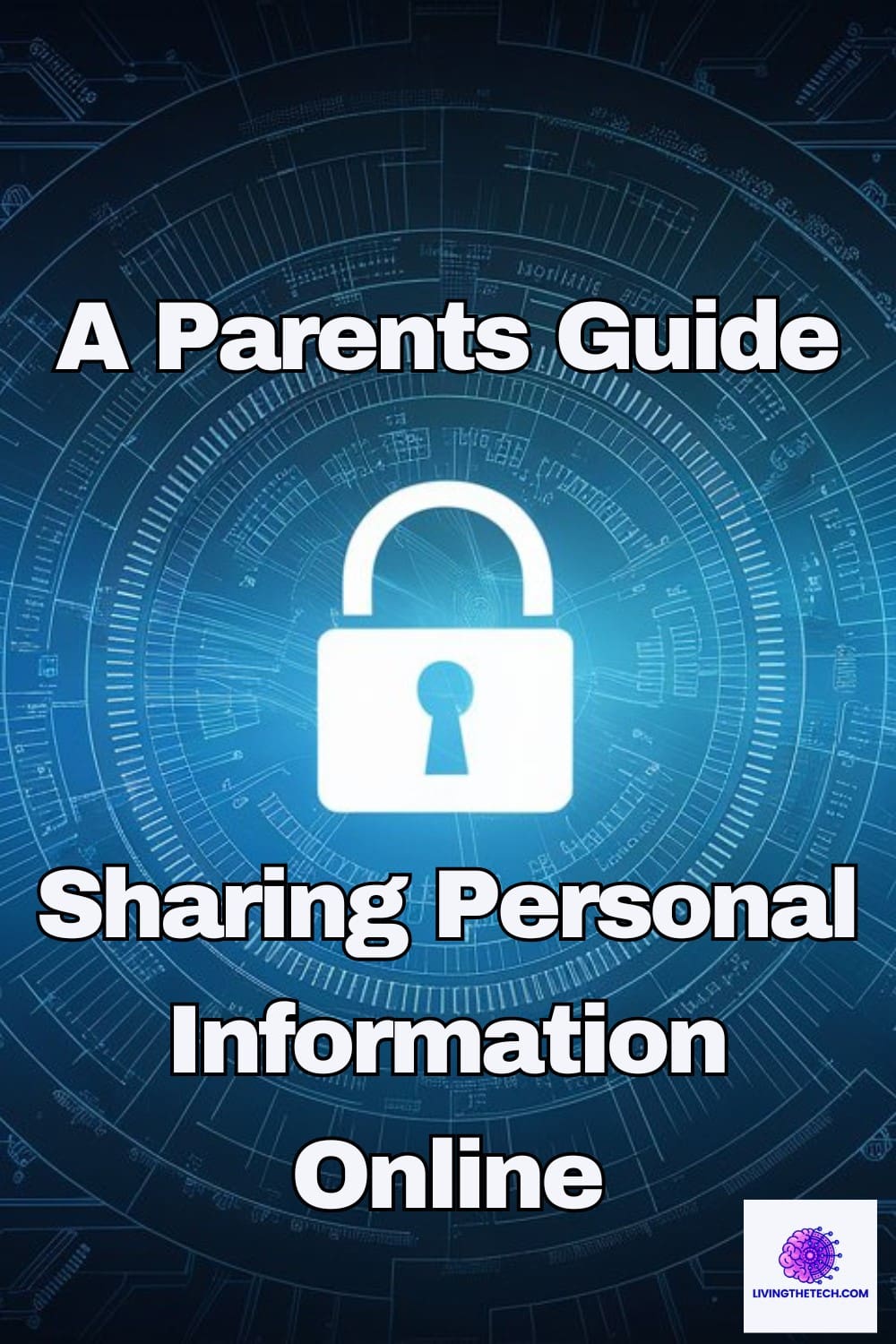How to Stay Safe When Sharing Personal Information Online
In today’s digital age, children are growing up with unprecedented access to the internet. While this offers countless educational and entertainment opportunities, it also presents risks, particularly when it comes to sharing personal information online. As a digital parent, it’s crucial to educate your child/children about sharing personal information online. This guide will walk you through the best practices for raising children’s awareness about the importance of safeguarding and sharing (or not) personal information on the Internet.
Your data is valuable—don’t give it away for free.
Take control of your digital presence today by following these simple habits. Stay aware. Stay private. Stay safe.
Understanding the Risks: Why Online Privacy Matters
The internet is a vast space where information can spread quickly and often uncontrollably. According to Pew Research, approximately 95% of teens have access to a smartphone, and 45% are online almost constantly. This increased connectivity heightens the importance of understanding the risks associated with sharing personal information online.
Personal information, such as full names, addresses, phone numbers, and even school details, can be misused by strangers or cybercriminals. Identity theft, cyberbullying, and unwanted contact are just a few potential dangers. Teaching children about these risks empowers them to make smarter decisions online when it comes to what personal information they do or do not share online.
Strategies for Teaching Children About Online Privacy
Effective communication and practical strategies can help children understand the significance of online privacy and sharing personal information. Here are a few approaches:
1. Start the Conversation Early
It’s never too early to start discussing online safety, and use age-appropriate language to explain why some information should remain private. Begin with simple concepts, like why they shouldn’t share their full name, address or school name with strangers online.
- Personal Information: avoid sharing personal details such as their full name, address, phone number, or school name, basically anything that can personally identify you. It’s important to use only a screen name (not your real one) for online platforms and not share passwords, except with parents.
- Photos and Videos: Be cautious about posting personal pictures or videos online. It’s best to avoid sharing images that could reveal their location or identity.
- Online Interactions: Never agree to meet someone in person whom they have met online without parental approval and supervision. Make sure your online contacts are who they say they are, as you could have a 50-year-old man online pretending to be a 12-year-old boy. We should encourage our children to speak to us if there is anything that makes them feel uncomfortable or threatened. Communication is key.
2. Set Clear Guidelines
Create clear rules regarding what information can and cannot be shared, such as where you live or go to school. Discuss these guidelines and ensure your child understands the reasons behind each rule. Consider creating a digital family agreement that everyone signs.
3. Use Real-Life Examples
Relate online privacy to scenarios your child can understand. For example, compare social media sharing to talking to strangers at the park. Ask them, “Would you tell a stranger your home address?” to help them grasp the importance of privacy.
Struggling with parenting in the digital age? 8 Digital Parenting Strategies to Survive in a Tech World
Practical Tips for Online Safety
Implementing these practical tips can enhance your child’s ability to navigate the internet safely:
1. Teach Them to Think Before They Share
Encourage your child to pause and think before posting anything online. Ask them to consider why they’re sharing the information and who can see it. This practice helps them become more mindful of their digital footprint.
2. Discuss the Importance of Privacy Settings
Show your child how to use privacy settings on social media and other online platforms. Explain how these settings can limit who sees their information and why it’s crucial to keep profiles private.
3. Monitor Online Activity
While respecting your child’s privacy, keep an eye on their online activity. Use parental controls and monitoring software to help manage their internet usage. Make it a collaborative effort by involving them in setting these controls.
Building Digital Resilience
Alongside teaching privacy, fostering a sense of digital resilience is vital:
1. Encourage Open Communication
For me, this is critical to helping your children in the digital age deal with the online world. Let your child know they can talk to you about anything they encounter online that makes them uncomfortable or just plain weird. Listen and get them to ask you questions, try addressing their concerns without judgment to reinforce trust. Trust is the base of open talks. Parents should really listen to their children and understand their feelings and views. This respect leads to honest talks about tech’s good and bad sides.
- Be receptive to their insights and perspectives, even if they differ from your own.
- Regularly check in with your child about their digital activities and online interactions.
- Encourage them to express their concerns or questions without fear of having their devices taken away or being judged unfairly.

2. Teach Them How to Handle Cyberbullying
Discuss what cyberbullying looks like and encourage them to chat with you about any instances. Reassure them that they’re not alone and emphasise the importance of talking to you and then blocking and reporting these instances to the platform provider and/or local authorities.
Parent Tip: Reporting cyberbullying on social media platforms, TikTok has a way of reporting bullying, and so does Snapchat.
Cyberbullying can take many forms, like mean online comments or constant digital harassment. As a parent, watch for changes in your child’s behaviour. Look for signs like avoiding friends, mood swings, or not wanting to use their devices. One of my sons experienced cyberbullying, and he went unusually quiet and didn’t want to use his smartphone. We had to coax it out of him, and he eventually showed us the offending messages.
3. Promote Critical Thinking
Help your child develop the ability to discern credible information from scams or fake news. Encourage them to question the source and purpose of the information they encounter online. This means educating them to look at information fairly, think about different views from multiple sources, and make their own smart choices. By doing this, we help our children be more informed when online and to question and handle challenges well.
The Role of Education and Resources
There are numerous resources available to aid parents in teaching online safety:
1. Utilise Educational Materials
Leverage educational tools and resources designed to teach children about internet safety. Websites like Common Sense Media offer valuable guides and resources for parents and children.
2. Attend Workshops and Seminars
Participate in workshops and seminars focused on digital safety. Many schools and community centres offer sessions that equip parents and children with essential skills for navigating the digital world safely.
3. Stay Informed About Tech Trends
As tech and social media evolve, so do the strategies employed by cybercriminals. Keeping yourself informed about the latest trends in technology and online safety will help you guide your child effectively.
Empowering the Next Generation
Teaching children about online privacy and sharing personal information is not just a one-time conversation but an ongoing dialogue. By equipping them with the knowledge and skills to protect their personal information, you empower them to navigate the digital landscape safely and confidently. Remember, the goal isn’t to instil fear but to cultivate awareness and responsibility. Together, we can help the next generation become savvy, resilient internet users.
Disclaimer
The views and opinions expressed in this blog are solely my own and reflect my personal experiences as a digital parent to two teenage, online game-playing boys. While I strive to provide helpful information and share what has worked for me, please remember that everyone’s situation is unique. The content provided here is not intended as professional advice. If you require specific guidance or support, I strongly encourage you to seek assistance from qualified professionals in the relevant field

